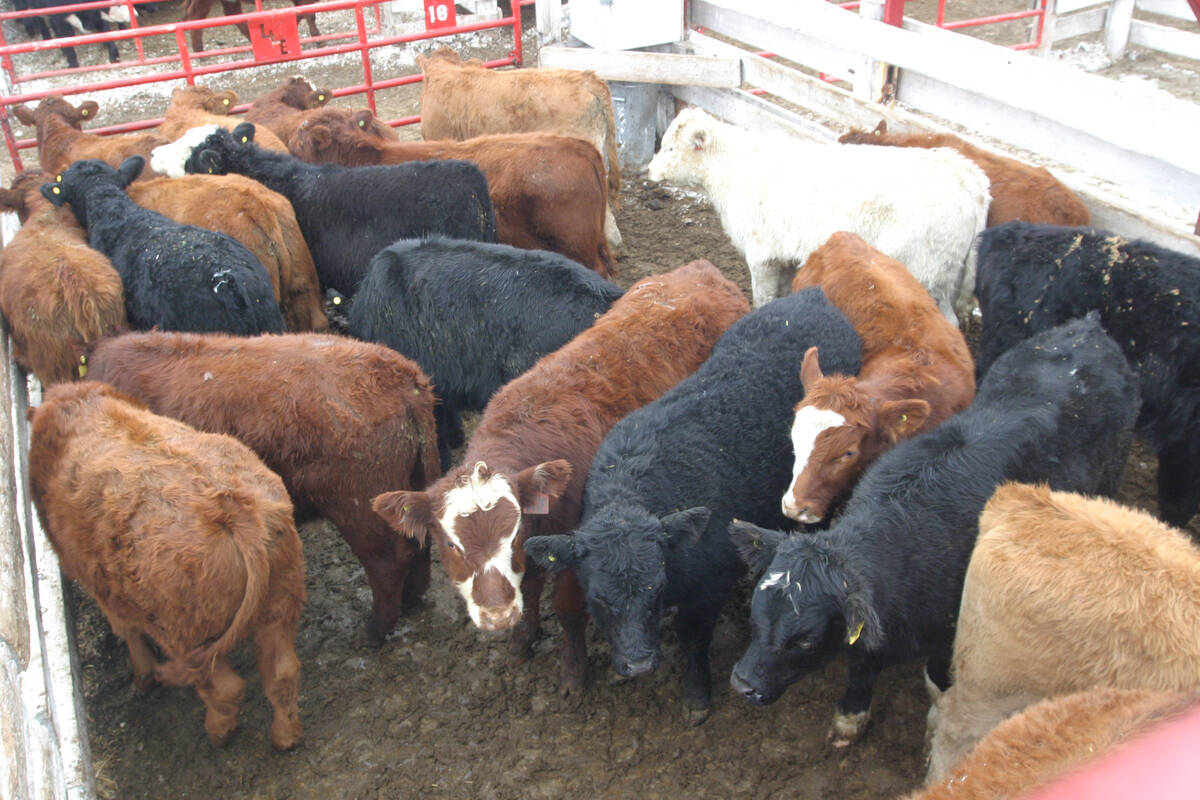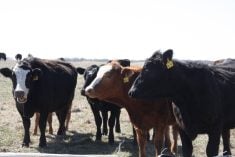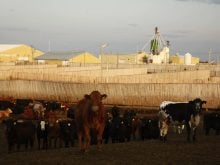This cattle market information is selected from the weekly report from Canfax, a division of the Canadian Cattlemen’s Association. More market information, analysis and statistics are available by becoming a Canfax subscriber by calling 403-275-5110 or at www.canfax.ca.
Fed prices still rising
Alberta fed steer and heifer prices climbed higher again last week. Steers closed up $1.21 to $301.11 per hundredweight, while heifers were up $3.67 at $300.25.
Read Also

Animal protection delivery to change in Saskatchewan
The Saskatchewan government is looking for a new agency to handle animal welfare after Animal Protection Services of Saskatchewan decided not to renew its contract next year.
Western Canadian fed cattle in the $300s per cwt. are $37 stronger than the same week last year. In the last week of May, Alberta steers averaged $298 per cwt., up $11 from April, which was the second-largest monthly rally of the year.
Dressed sales were reported at $502-$503 per cwt. delivered, steady to $1 stronger than the previous week.
All three western Canadian packers were buying, and delivery was scheduled from immediate to the second half of July.
U.S. interest offered a premium over local deals.
The Alberta to Nebraska cash basis was -$2.96 per cwt., weaker by $1.37 and for the first time in three weeks.
Nearby live cattle futures contracts closed record high June 6 at $226.30 per cwt. and $9.75 higher than the start of the week.
Fed exports to the U.S. are lower, particularly from Eastern Canada. Year-to-date exports are two percent below last year.
Ontario reported dressed sales at $520 per cwt. delivered, up $15-$20 per cwt. from the previous week. The Ontario cash-to-futures basis was $13.40 per cwt., which is the strongest since June 2022 and $8.16 per cwt. higher than the previous week.
Analysts suggest fed prices are at or near annual highs. Over the past five years, price fell about 10 per cent from first-half highs to second-half lows. If that happens again, prices would bottom around $270 per cwt.
Calf sales up
There are moisture concerns in many regions and producers are managing stocking rates on grass carefully.
Some are sending heavier grass cattle to market, although volumes are not large.
Feeder heifer demand has been strong this spring as the feeder price spread narrows.
Record high forward delivery prices for fall have resulted in a significant increase in calf sales. Most of these are steers; heifers are limited.
Eastern Canadian feedlots are pushing the market. Last week, Alberta and Saskatchewan five-weight steers for October-November delivery traded $570-$626 per cwt. with a weighted average price of $593.72 per cwt. at 551 pounds.
Forward delivery prices for fall are trading at a premium to cash, suggesting no decline is being priced into the market. For example, the five-weight steers are targeted for the August 2026 fed market at 1,550 lb.
Assuming feedlots can buy new crop barley at $300-$310 per tonne, the cost of gain would be about $1.50 per lb. The steers have a break-even feed price of $308 per cwt. and a break-even cash to futures basis of about plus $40 per cwt. against August live cattle.
Historically, the cash-to-futures basis for August is about -$3 per cwt.
Non-fed demand good
There is good packer demand for non-fed cattle with seasonally tighter numbers. D2 cows are holding in the low $230s per cwt. and are within 50 cents of the high set in May. Seasonally, the market should be finding highs. Cow prices often drift lower in the second half of June while bull prices historically strengthen.
Small premiums have been paid for a few grain-fed cows on the market.
In May, western Canadian cow slaughter was the smallest since 2015, not counting the 2020 COVID year.
Non-fed supply is expected to remain manageable for the near term. Dry conditions could see more cows hitting the summer market.
In the United States, southern trade climbed to $232 per cwt. Nebraska reported $240 per cwt. live and $380 per cwt. dressed, stronger $5 and $14, respectively.
Cutouts stronger
Choice cutouts ended the week $1 per cwt. stronger at $366.85 and Select moved nearly $3 to finish $356.61 per cwt. Recent strength on cutouts has been counter seasonal to historical trends with the five-year average softening for both.
Meanwhile, slaughter bull prices are finding strength, ranging 17 to 40 per cent higher than last year at $230 to $250 per cwt. in the past nine weeks. Alberta slaughter bulls last week brought $245 per cwt., up $39 from last year and $99 from the five-year average. Carcass weights are 54 lb. heavier than last year at 1,024 lb.















